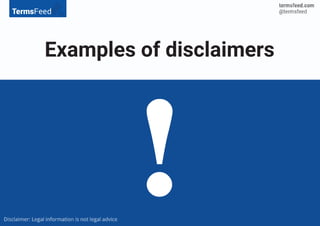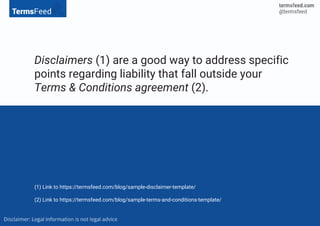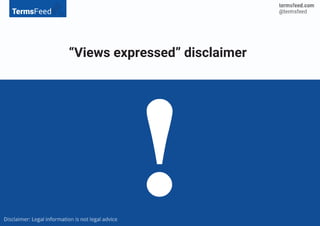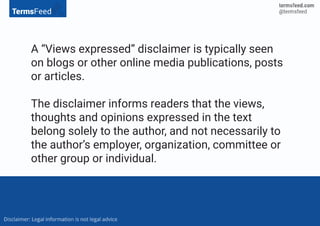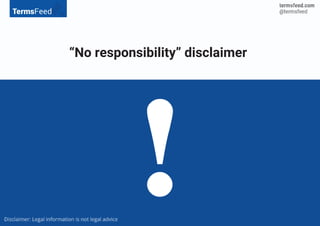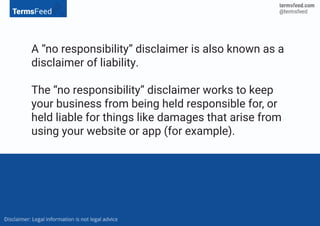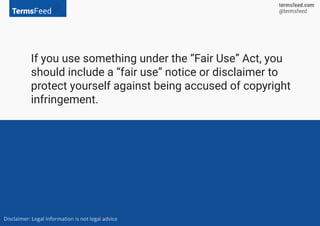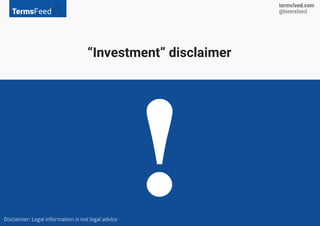The document discusses different types of disclaimers that can be used including: views expressed, no responsibility, past performance, use at your own risk, errors and omissions, fair use, investment, and email disclaimers. Views expressed disclaimers clarify that any opinions belong solely to the author. No responsibility disclaimers keep a business from being liable for damages from their website or app. Past performance disclaimers state past results don't guarantee future performance which is common in financial markets.
